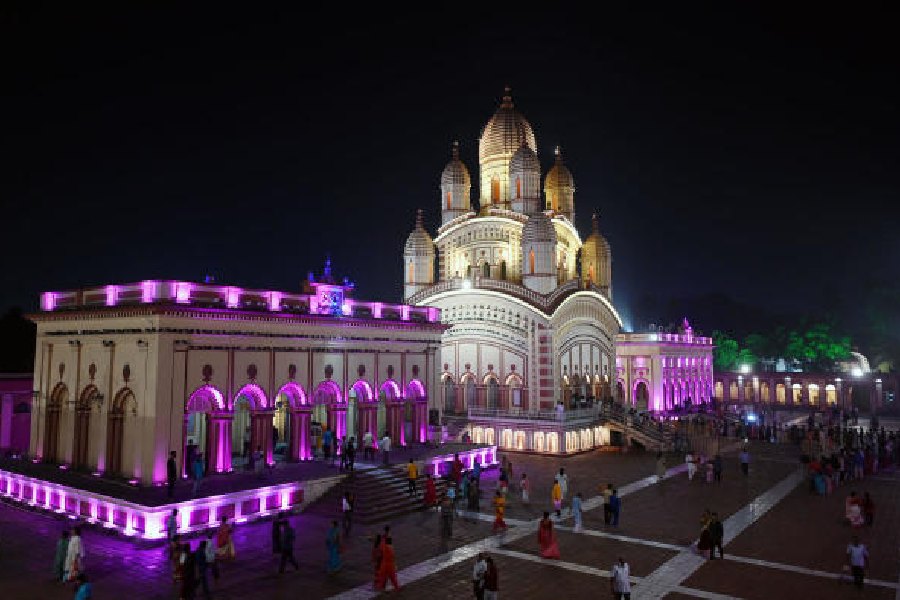Sounds of crackers filled the air in multiple pockets of Kolkata since late afternoon on Saturday and their frequency increased in the evening.
The Telegraph spoke with residents in several parts of the city and most of them said they could hear sounds of crackers bursting. “It is not a continuous sound but I can hear it quite often,” said a resident of Beleghata.
Residents of Kasba and Behala also said they could hear the sound of crackers. A Ballygunge resident said he heard firecrackers bursting in his neighbourhood since afternoon.
Calcutta High Court has banned the use of all kinds of crackers except green crackers, which reduce the emission of particulate matters by 30 per cent compared to conventional crackers.
In an order dated October 11, 2022, the court said: “There shall be a complete ban on the sale and bursting of all kinds of firecrackers, except green crackers in the state of West Bengal”.
The court’s order said green crackers can be burst only for “two hours during Deepawali festival from 8pm to 10pm”.
The noise was not the only problem. The air turned foul by 6pm on Saturday. There was a haze across the city.
Scientists and air quality management specialists said that any cracker that produces colours, even if it does not emit a strong sound, is very bad for health. The light produced when a cracker is burst is the result of heavy metals used in manufacturing it.
Abhijit Chatterjee, an air quality management specialist and a professor at the Bose Institute, said the heavy metals emanated floats in the air for long, especially because of prevalent weather conditions. “Breathing this air is extremely harmful,” he said.
Scientists explained that owing to prevalent weather conditions, as winter approaches, the pollutants hang close to the ground. The same pollutants are dispersed by greater wind speed, warmer temperature that causes the air to rise, and rain during summer and monsoon. But with the drop in temperature, the pollutants get trapped closer to the ground.
“It becomes far worse during Diwali because of the large volume of emissions from bursting of firecrackers,” said a scientist with the state pollution control board (PCB).
Kalyan Rudra, chairperson of the state PCB, listed some of the metals and the colours crackers produce.
“Aluminium produces white colour, carbon or iron produces orange, sodium compound produces yellow, copper compounds produce blue and strontium carbonates produce red colours,” said Rudra.
“My appeal to people is to shun crackers and celebrate Diwali in other ways,” he said.
Some of the other metals commonly used in crackers are lead, cadmium, sodium, zinc, copper and magnesium.
“Lead can impact the central nervous system, cadmium affects the kidneys and magnesium can lead to fever. Exposure to nitrate can cause mental impairment,” Rudra said.
He added that sodium can lead to problems in the skin, zinc can cause vomiting and copper can lead to respiratory tract irritation.
At 7pm on Saturday, the air quality in the monitoring station in Bidhannagar and Howrah’s Ghusuri was “very poor”.
It was “poor” in Victoria Memorial, Rabindra Bharati University, Jadavpur, Fort William and Rabindra Sarobar. Owing to technical glitches, the station in Ballygunge did not show any results.
